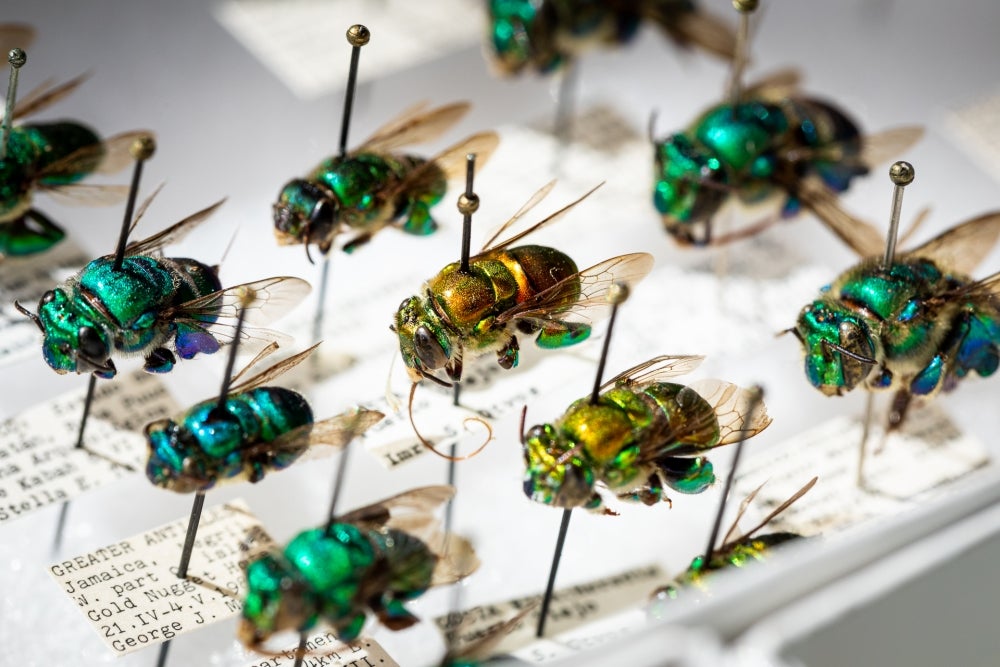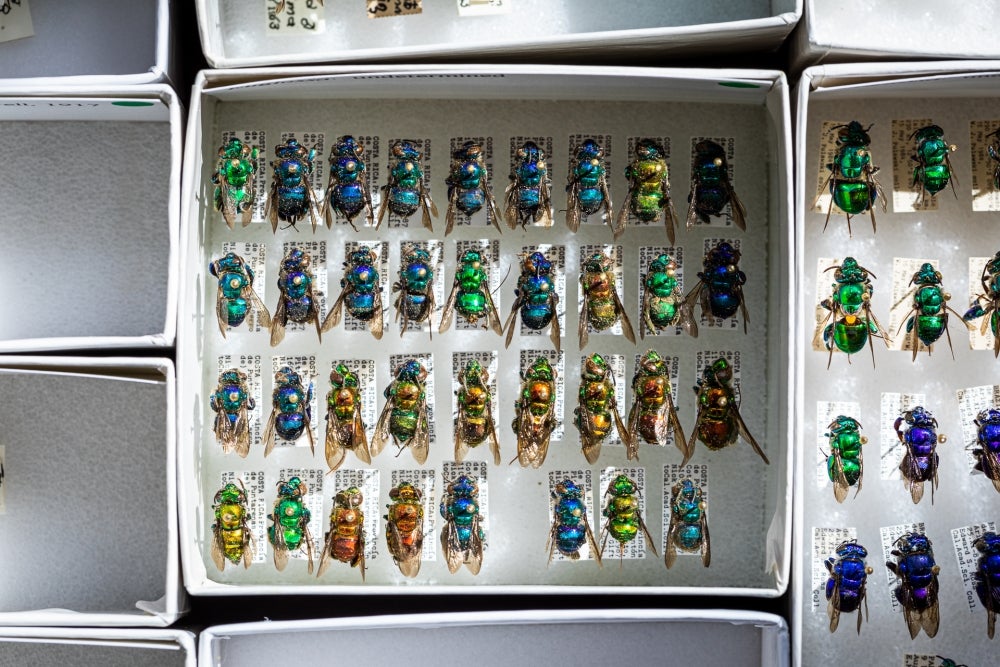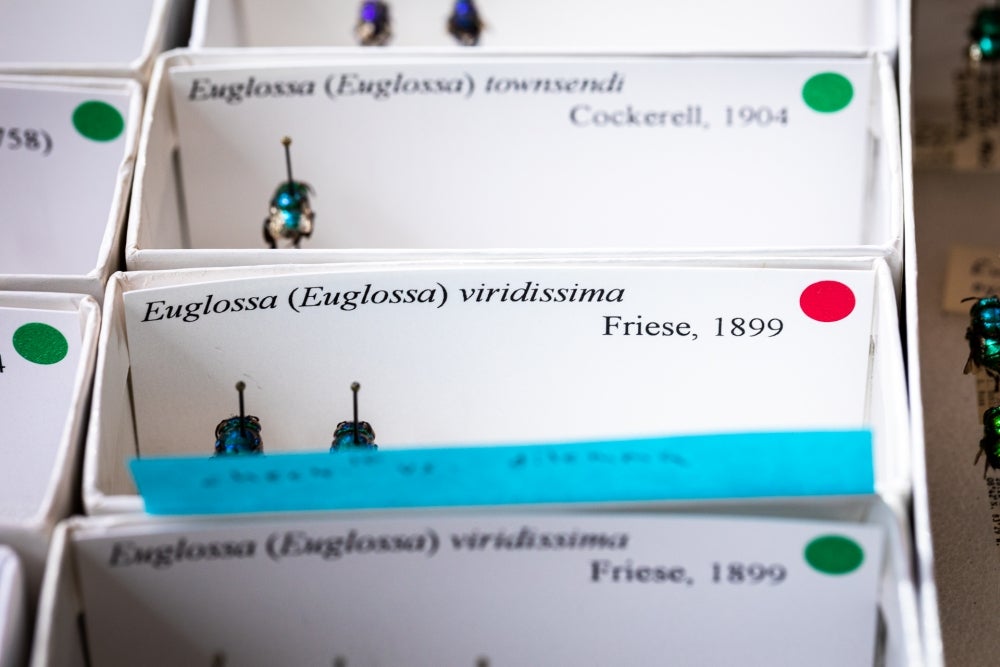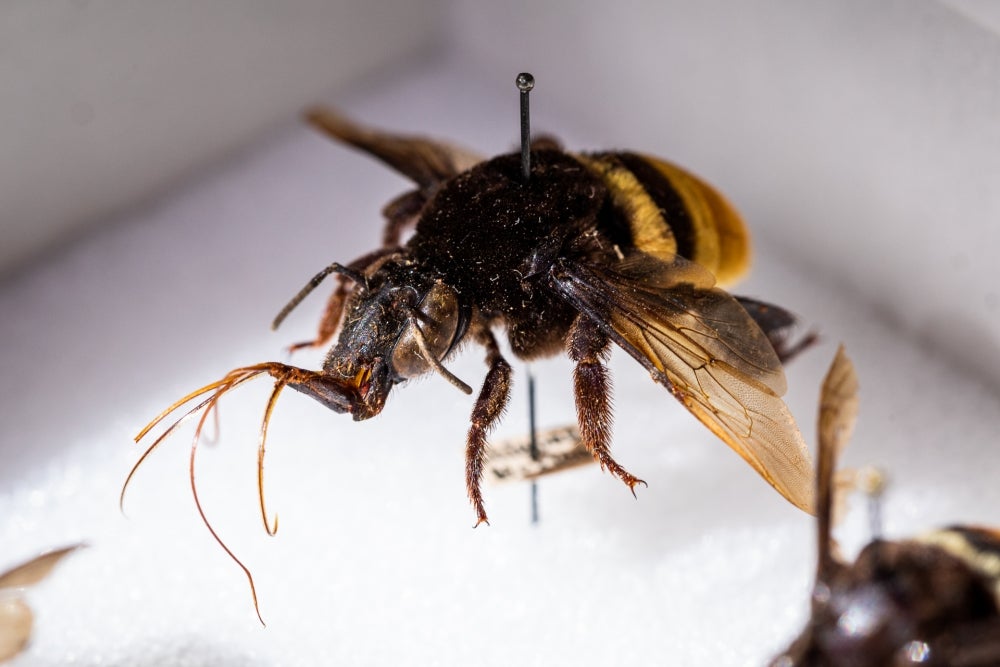Creating a Buzz
For an insect with so many species, such a vast range and a seriously important job, there is, oddly, a paucity of data on Anthophila. Better known as bees, they are pollinators extraordinaire, makers of honey and, sure, the ladies can sting. Their significance to food production and plant health worldwide is undisputed — and in trouble.
That’s where Big-Bee flies in.
The multimillion-dollar, multi-institution project being led by UC Santa Barbara aims to illuminate what’s driving bees’ decline by addressing that lack of data. With $3 million from the National Science Foundation and a three-year timeline, the collaborative effort will create more than 1.3 million bee specimen images from 5,509 agriculturally and phylogenetically important global bee species.
As a result, information about where and when a specimen was collected will be supplemented with over a million high-resolution 2D and 3D images. The data that is extracted — about bees’ anatomical and behavioral traits, for example — will be made freely available online, enabling more and better research on bees that sheds light on how their populations have changed over time and, significantly, why.
“A bee’s anatomy can change in response to its environment,” said UC Santa Barbara’s Katja Seltmann, an entomologist and principal investigator on Big-Bee. “By studying these images, researchers like myself will be able to infer how resilient different bee species and populations are to stressors like climate change or habitat loss.
“We know bees are declining but we don’t know what are some of the functional traits of bees that make them more or less sensitive to anthropogenic change,” added Seltmann, director of UCSB’s Cheadle Center for Biodiversity & Ecological Restoration. “What better way to ask these questions than to create morphological, anatomical, and life history datasets, then look at bees over space and time and be able to say, ‘Yes, their body size is smaller in cold climates,’ or, ‘Bees are hairier where it’s hot.’ This will give us a picture of larger trends in bees globally.”
Seltmann has previous experience with National Science Foundation’s Advancing Digitization of Biodiversity Collections program, which made the grant, spanning 10 years and three other entomological digitization efforts. She’s also an evolutionary biologist with rich expertise in bees — and in other bee researchers. And she drew on all of the above in conceiving the project, then identifying and assembling all the key stakeholders in Big-Bee.
The project altogether involves 13 collaborating institutions, including UC Berkeley, the California Academy of Sciences, the Natural History Museum of Los Angeles, Harvard’s Museum of Comparative Zoology, Arizona State University and the University of Kansas. Every institution brings important expertise to the project and their valuable bee collections.
At UC Santa Barbara, Seltmann and her team are determining what the digitized images will look like and how they will be standardized, as well as how they will be packaged for researchers so that they’re easily found and accessible. They also will spearhead research projects in both computer science and biology based on the images that end up creating additional public datasets.
“One thing I talk about in the grant is the present limitations of biodiversity data — there’s a lot out there, but it’s very messy,” Seltmann said. “We proposed to put out clean versions, research-ready datasets, and one of big things we’re doing here at UCSB is trying to understand how best to do that."
“The world of biodiversity data is like walking into supermarket and not being able to read the language on any of the packaging. There could be really awesome stuff there, but it’s hard to know if you don’t understand the product,” she added. “We want to lower the bar by translating that stuff and making it more usable.”
Making the data generated by the project not only more readable, but completely open access, will enable everyone from researchers to animators and just plain bee lovers to see and use the high-resolution images of the bees.
“From philosophical point of view, the goal is to facilitate bee research by creating a resource for people who are interested in bees, so they don’t have to find all the information on their own,” Seltmann said. “It’s also to stimulate research into other bees and insects by providing these examples, by having a resource to turn to with these questions. We hope to raise awareness, to get people excited about bees and maybe we can even save some bees along the way.”







